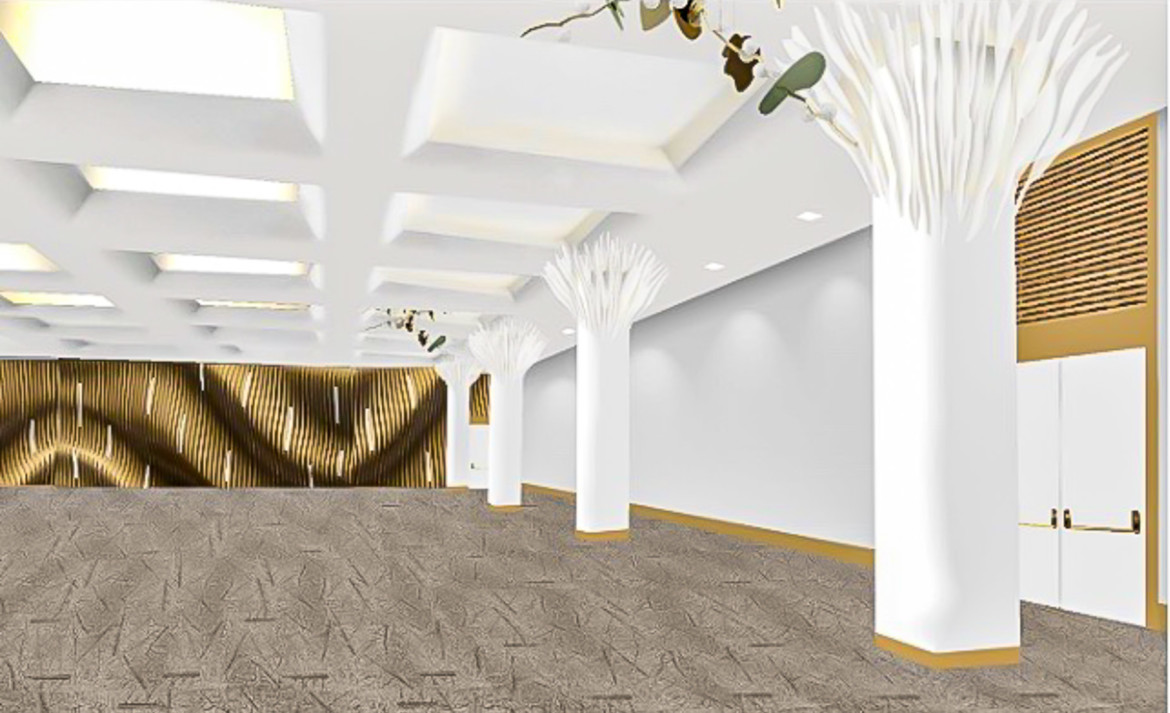By Greta Chiocchetti
In what was the first project working for a real-life client for many, undergraduate students of the School of Interior Architecture & Design (IAD) presented the team at the Cathedral of St. Mary of the Assumption with a proposed refresh of its event space. But the valuable, hands-on learning experience won’t be their only takeaway—the landmark San Francisco church has allocated $1 million to make their designs a reality.
Originally Capstone Coordinator Tom Collom split his IAD Studio 3 students into two competing teams, but the St. Mary’s staff were blown away by both designs and wanted to include elements from each.
“After the last presentation was finished, the St. Mary’s folks said they loved the designs and wanted to move forward,” said Collom. “The students were anxious to hear which team would be chosen, but they surprised us and said both—they couldn’t choose just one.”
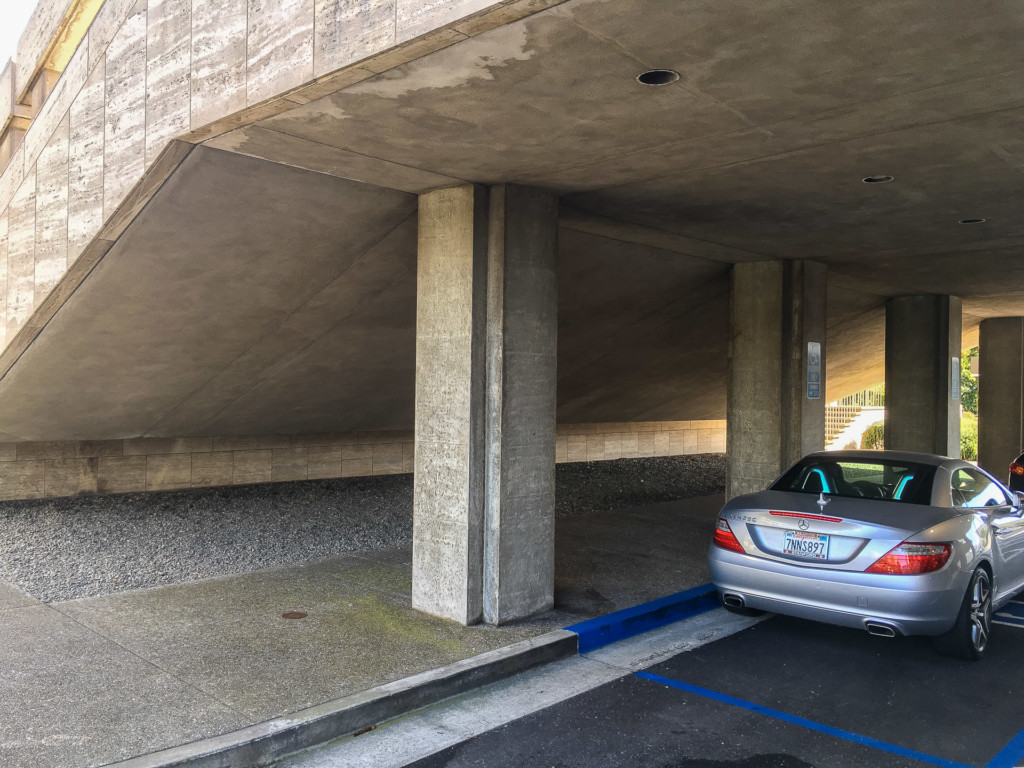
A current exterior image of St. Mary’s. Photo courtesy of Tom Collom. 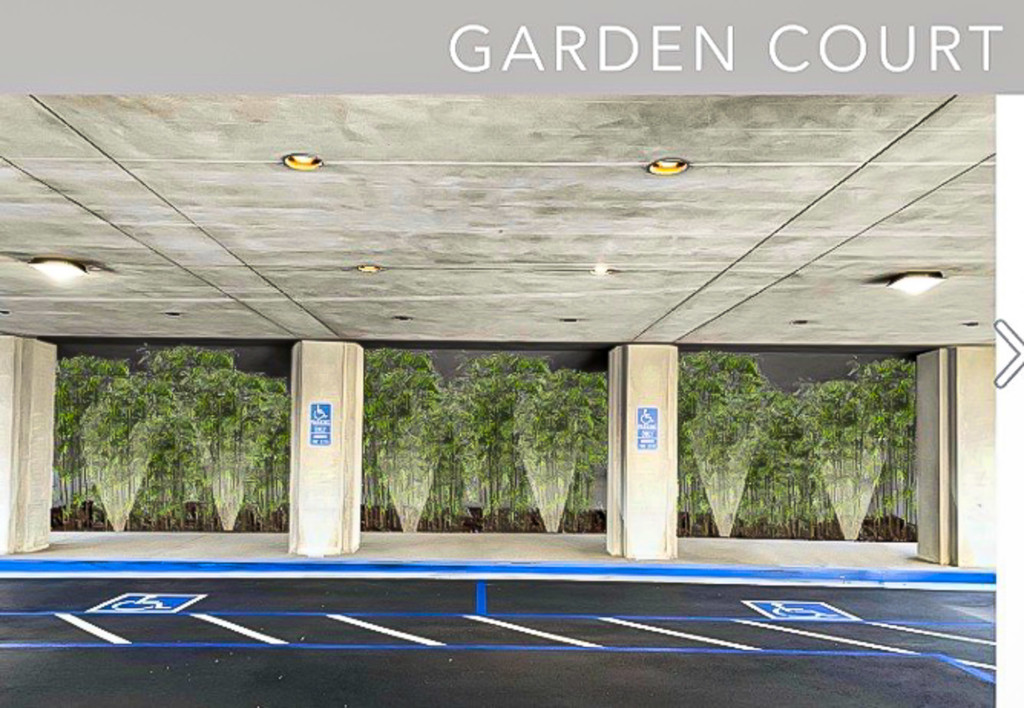
Team Choir Girls’ proposed Garden Court. Image courtesy of Tom Collom.
Like all good designers, the two teams (The Choir Girls and Team Bloom) started with strong, focused concepts in mind. Team Bloom honed in on the idea of the space blossoming for a renewed experience. Meanwhile, the Choir Girls focused on the concept of “roots”—and the church’s iconic part of the city’s history since 1854.
“We kept some of the meaning of roots literal in the design, like using actual plants and using patterns that look like roots and the veins of leaves and other things like that, that you find in nature,” said Studio 3 student Bianca Melone. “As far as implementing it in not such a literal way, I think we just kind of wanted to pay homage to the fact that St. Mary’s has been in San Francisco for so many years by trying to kind of keep some of the skeleton and some of their current design the same, to kind of keep their roots the same, in a way.”
Students initially thought that the budget would be much tighter, which led them to choose more inexpensive options while splurging only on a few special pieces, like a gorgeous chandelier for the great hall and LED screens projecting natural images on the ceiling.
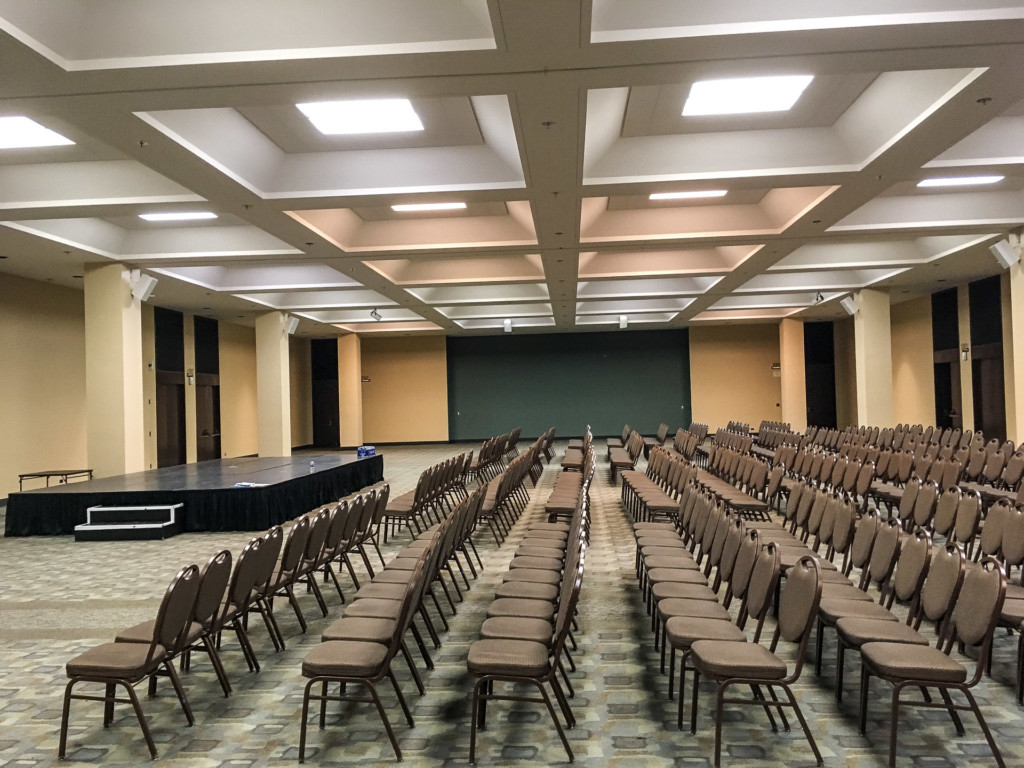
The current Patrons Hall at St. Mary’s. Photo courtesy of Tom Collom. 
Team Bloom’s proposed LED screen for the Patrons Hall. Image courtesy of Tom Collom.
“I was really surprised when we found out how much they actually had set aside for the budget,” said IAD student Morgan Sandusky. “Throughout the process, [the St. Mary’s team] implied that we wouldn’t have that much money to work with, so I guess I was sort of scaling myself back in my head. I was actually the one that asked what the budget was, and I was pleasantly surprised that it was actually so much.”
The redesign focused on the cathedral’s exterior entrance, an enclosed patio, the interior entrance, a great hall with a capacity of 500, and two adjacent halls along with restrooms. To convey their vision for the new and improved space, both teams seemed to first set their sights on the cathedral’s dated, green patterned carpet. Initially, the St. Mary’s staff told students that replacing the carpet would not be part of the budget, however, students were encouraged by Collom to propose alternatives anyway—and after seeing their stylish picks, St. Mary’s was on board.
“The carpet we came up with to replace the old one was first of all sustainable, and also easy to clean. If for some reason they can’t clean the carpet, they can pull up the individual carpet tiles, bring them to the manufacturer, and they will change them out and give them new ones,” said IAD student Patricia Kabash. “But my favorite part about the carpet we chose is that the old carpet will be recycled and reused, not just thrown away.”

Current hallway at St. Mary’s. Photo courtesy of Tom Collom. 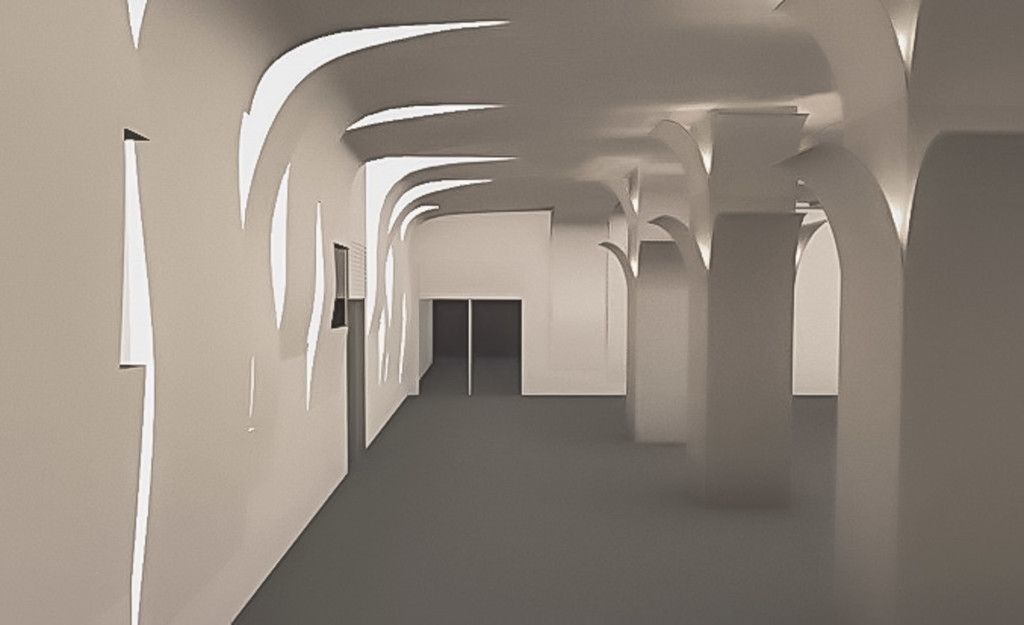
Proposed curved hallway by Team Bloom. Image courtesy of Tom Collom.
Despite some inevitable delays due to COVID-19, the St. Mary’s team hopes to be able to finalize the redesign by the summer of 2021—and students are anxiously awaiting their plans to be realized.
“I want guests to feel alive and I want them to feel like they’re where they’re supposed to be—like they’ve reached a destination. It’s just like the feeling that you have when you think about where you’re rooted, and St. Mary’s is rooted in San Francisco,” said Melone. “The event space is underground and is quite literally the roots of the building. So, I want them to feel alive. And I think that the concept of roots and plants and nature and things like that help to enforce that.”
